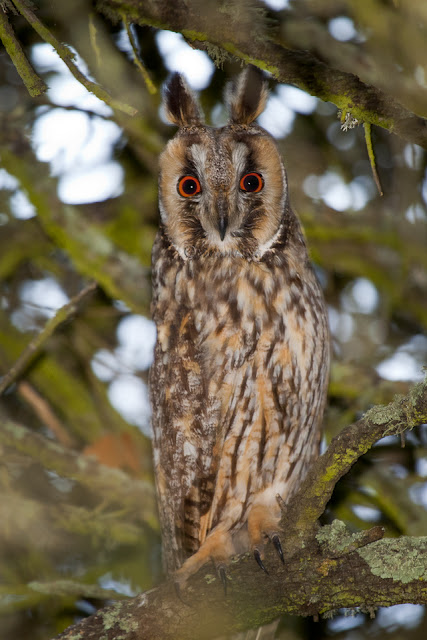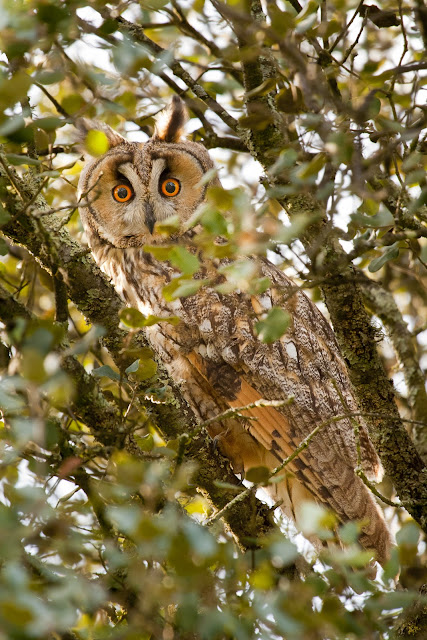Re: owlice
Posted: Thu Apr 26, 2012 10:58 am
I found some information about the owl.
http://www.flickr.com/photos/thingamiji ... 3928947374
http://www.flickr.com/photos/thingamiji ... 3928947374
The Trouble With Tribbles..... : "The Flammulated Owl (Otus flammeolus) is a small, nocturnal owl approximately 6 in long with a 14 in wingspan. Males and females can be distinguished by their weight."geckzilla wrote:
I found some information about the owl.
http://www.flickr.com/photos/thingamiji ... 3928947374
http://en.wikipedia.org/wiki/Tribble wrote:<<Tribbles are fictional asexual animals in the Star Trek universe who first appeared in the episode titled "The Trouble With Tribbles". They are depicted as small, soft, and gentle, and produce a soothing purring sound. These traits are said to endear them to most sentient races which encounter them, with the notable exception of Klingons, who consider tribbles to be "mortal enemies" of the Klingon Empire, as stated in the Star Trek: Deep Space Nine episode "Trials and Tribble-ations". A family of proteins which have a variety of roles, including involvement in the control of the cell cycle in the fruit fly, was named after these fictional animals. Tribbles are native to the planet Iota Geminorum IV. They are essentially small bundles of fur with no visible external features. Their only two purposes in life appear to be to eat and to reproduce, and they perform both of these functions exceptionally well. McCoy concludes that tribbles use over fifty percent of their metabolism for reproduction and that they are born pregnant. A creature that was genetically engineered to hunt tribbles is introduced in the animated episode "More Tribbles, More Troubles".>>
http://en.wikipedia.org/wiki/Iota_Geminorum wrote: Iota Geminorum (ι Gem, ι Geminorum) is a Class G9, fourth-magnitude star in the constellation Gemini.
Iota Geminorum is a variable star located about 325 light-years from Earth. It forms an unequal pair with 59 Geminorum (app. mag. 5.77; Class F4III), which is more or less the same distance away.
In Chinese, 五諸侯 (Wu Zhū Hóu), meaning Five Feudal Kings, refers to an asterism consisting of ι Geminorum, θ Geminorum, τ Geminorum, υ Geminorum and φ Geminorum. Consequently, ι Geminorum itself is known as 五諸侯三 (Wu Zhū Hóu sān, English: the Third Star of Five Feudal Kings.). In certain tribes along the shores of the Arabian sea that speak languages influenced heavily by Mesopotamia, Iota Geminorum appears in oral traditions as Saritcha. It symbolizes companionship, clearly influenced by either Greek or Babylonian mythology. In one of the Lurs epic, the princess promises her beloved eternal love and companionship under Saritcha's watchful and approving gaze.>>

I think that's not a mockingbird; maybe a shrike? Any idea where that image was taken?geckzilla wrote:Bonk... bonk... bonk...
Thank you very much!! That is amazing.geckzilla wrote:I found some information about the owl.
http://www.flickr.com/photos/thingamiji ... 3928947374
Cute cute cute!!geckzilla wrote:
I wish I knew where a lot of GIFs originated from. They get ripped from some video because someone likes a few seconds of it and then end up all over the web with no attribution.owlice wrote: I think that's not a mockingbird; maybe a shrike? Any idea where that image was taken?
http://www.nytimes.com/2012/10/04/science/new-bizarre-species-of-small-dinosaur-identified.html?_r=0 wrote:Bizarre Species of Miniature Dinosaur Identified
By JOHN NOBLE WILFORD: October 3, 2012 103 Comments
<<Not every dinosaur grew up to be a mighty predator like Tyrannosaurus rex or a hulking vegan like Apatosaurus. A few stayed small, and some of the smallest dinosaurs that ever lived — tiny enough to nip at your heels — were among the first to spread across the planet more than 200 million years ago. Fossils of these miniature, fanged plant-eaters known as heterodontosaurs, or “different toothed reptiles,” have turned up as far apart as England and China. Now, in a discovery that has been at least 50 years in the making, a new and especially bizarre species of these dwarf herbivores has been identified in a slab of red rock that was collected in the early 1960s by scientists working in South Africa.
In a report published Wednesday in the online journal ZooKeys, Paul C. Sereno, a paleontologist at the University of Chicago and a dinosaur specialist, described the strange anatomy of the newfound member of the heterodontosaur family and gave the new species the name Pegomastax africanus, or “thick jaw from Africa.” He also apologized in an interview for not getting around sooner to this piece of research.
When he first viewed the specimen at a Harvard laboratory, Dr. Sereno said, “my eyes popped, as it was clear this was a distinct species.” Embedded in the rock were remains of a creature with a short parrotlike beak, one-inch jaws, sharp teeth and a skull no less than three inches long. The entire body was less than two feet in length and probably weighed less than a small house cat.
“I’m embarrassed to say how many years ago that was — 1983,” he said. “But I was an enterprising graduate student then at the American Museum of Natural History. All the while since then, I wondered if anyone else might spot the creature hiding among the lab drawers.”
The Pegomastax fossils were eventually returned to the South African Museum in Cape Town, the true nature of the one slab still undiscovered, Dr. Sereno said. The main researcher responsible for collecting the fossils was Alfred Crompton, a Harvard professor now retired. Part of Dr. Sereno’s research was supported by the National Geographic Society, where he also is an explorer-in-residence.
His close examination showed that behind the parrot-shaped beak were a pair of stabbing canines up front and a set of tall teeth tucked behind for slicing plants. These teeth in upper and lower jaws operated like self-sharpening scissors, Dr. Sereno said, with shearing facets that slid past each other when the jaws closed. The parrotlike skull, he noted, may have been adapted to plucking fruit. Dr. Sereno said it was “very rare that a plant-eater like Pegomastax would sport sharp-edged enlarged canines.” Some scientists suggested that the creature may have consumed some meat, or at least insects.
In his new study, Dr. Sereno concluded that the creature’s fangs, unusual for a herbivore, were probably “for nipping and defending themselves, not for eating meat.” Other aspects about the new species and other heterodontosaurs, including their chewing mechanism, are evolutionary surprises, he said, and “their anatomy is key to understanding the early evolution of this great group of plant eaters.”
Another possible characteristic of the new species, Dr. Sereno said, is that its body might have been covered in quills, something like those of a porcupine. If so, he pictured that in life Pegomastax would have scampered around in search of suitable plants, looking something like a “nimble two-legged porcupine.” >>
Why would monks do this horrible act? And what are these birds fed?neufer wrote:Let us prey.makc wrote:I have some pictures of birds of prey monks keep in cages that I took when we visited some monastery nearby,
but you are not going to like them. They have their wings cut off and don't look too happy.

MEOWLBeyond wrote:Owlice becoming 'one' with her cat. Owlice waiting for the effect of 'oneness' to wear off.

